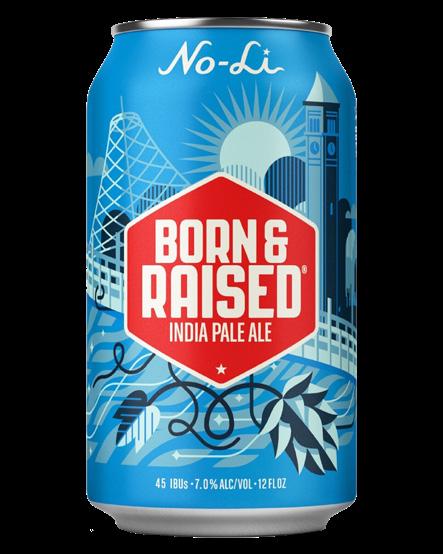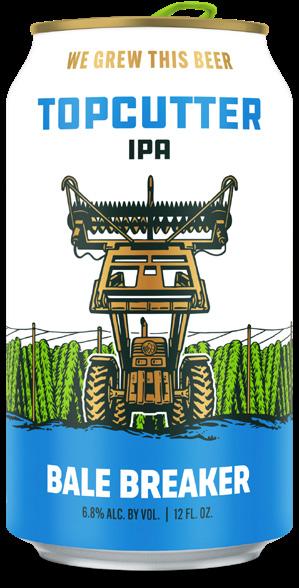Washington's hop varieties are a worldwide hit

Why is Washington such a prolific place to grow hops?
Meet the couple reviving a community icon
Games and puzzles related to this issue

For over 100 years, Washington has been the center of the known universe for hops growers, which means that it's also been an epicenter for great beers!
Washington is a haven for beer lovers everywhere, thanks to our prolific craft breweries and the farms across the state that grow the bulk of the country's hops. And it's remarkable to think that these 150 years of hoppy history can likely be traced back to two 19th century farmers who cultivated some plants and changed the state's agricultural landscape for good.
In 1852, pioneer Ezra Meeker and his family traveled from Iowa to Washington along the Oregon Trail and founded the town of Puyallup, where they began farming the land. Thirteen years later, Meeker and his father, Jacob, planted a few hop cuttings a friend had given them — and the hops took off, becoming, for a short time, the Puyallup Valley's biggest crop.
A few years later, an East Coast hop farmer named Charles Carpenter planted the first hop fields in Ahtanum, in the Yakima Valley, using plants from his family's farm in New York. They took well to the region's desert climate, fertile soil, and abun-
dant irrigation — and, unlike on the East Coast, the crops could produce a yield in their first year.
More hop farms began sprouting up all over the valley and the state, and Washington quickly became known for the crop. In the fall of 1891, the New York Times published an article about Washington's booming hop production, writing that "there is no State in the Union where hop growing is carried on with more success than in Washington... The industry has passed beyond the experimental stage and is steadily gaining ground."
These days, Washington is the No. 1 producer of hops in the country, and according to the U.S. Department of Agriculture, we grow about three-quarters of the nation's hops, mostly in the Yakima Valley. Washington has nearly 40,000 acres of hop farms, and countries worldwide clamor for Washington-grown hops, especially Belgium, Germany, and Canada. In 2023, Washington exported $319 million worth of hops around the world.

In the late 1800s and early 1900s, local breweries began taking advantage of easy access to the crop, and the beer industry blossomed, with breweries like Seattle Brewing & Malting Company, the Capital Brewing Company, and Schade Brewery in Spokane opening around this time. In 1916, however, Prohibition forced all the state's breweries to cease production.
"Prohibition nearly killed the industry," said Michael F. Rizzo, the author of "Washington Beer: A Heady History of Evergreen State Brewing." "Almost every brewery closed; hundreds of jobs were lost. Several larger breweries made near beer, and some tried making other food products."
Hop growers in Washington have always innovated new technologies (like this early combine) to make growing and harvesting more efficient.

After the end of Prohibition in 1933, Rizzo said, only a few wealthy businesspeople were able to restart their breweries, but smaller companies often failed to get off the ground. In addition, new laws banned any beer and wine above 3.2% alcohol by volume (ABV), which stymied production.
Some breweries thrived despite that restriction, and one example was Rainier Brewing Company, under the new leadership of Fritz and Emil Sick. While the brewery had operated before Prohibition and sold soda and other nonalcoholic beverages from 1916 to 1933, the Sick family re-energized the brand, paving the way for Rainier's iconic, unhinged 1970s ads and its eventual status as a cult classic.
In 1982, the legal ABV limit was raised to 8%, and Washington's craft beer movement officially began. A
month after the new law, Bert Grant opened Yakima Brewing and Malting Company, the first post-Prohibition brewpub, and in the subsequent years, breweries popped up all over the state, winning national awards and garnering worldwide attention. In 2023, the state's 459 craft breweries produced more than 560,000 barrels of beer, according to the Brewers Association, and in March, Washington breweries took home 27 Best of Craft Beer Awards.
"It is a big industry in the state, creating jobs and revenue," said Rizzo. "We were an industry leader for many years."
And all along, the partnership between Washington's craft breweries and its hop farmers has benefited all parties, including beer lovers. In addition to the environmental benefits of using local ingredients, Washington brewers are also able to brew fresh-hopped beers using local hops. By brewing the beer within 24 hours of harvest, breweries create ales that retain the bright, nuanced flavors of the fresh hops.

"The fresh-hops beers that come in early fall are always something unique and sell well," Rizzo said.
So the next time you order a delightfully hoppy Washington beer, raise your glass to the farmers and brewers who made it all happen.
Find more great stories at wagrown.com

"Their family came to Red Mountain on a coin flip. But their success here has nothing to do with chance."
Read more at wagrown.com

"Her parents were farmworkers. Now she owns the farm."
Read more at wagrown.com

Watch the show online or on your local station
KSPS (Spokane)
Mondays at 7:00 pm and Saturdays at 4:30 pm ksps.org/schedule/

"We've got a responsibility to take care of it for future generations."
Read more at wagrown.com





KWSU (Pullman) Fridays at 6:00 pm nwpb.org/tv-schedules/
KTNW (Richland) Saturdays at 1:00 pm nwpb.org/tv-schedules
KBTC (Seattle/Tacoma) Saturdays at 6:30 am and 3:00 pm kbtc.org/tv-schedule/
KIMA (Yakima)/KEPR (Pasco)/KLEW (Lewiston) Saturdays at 5:00 pm kimatv.com/station/schedule / keprtv.com/station/schedule klewtv.com/station/schedule
KIRO (Seattle)
Saturdays at 7:30 am and Mondays at 2:30 pm or livestream Saturdays at 2:30 pm on kiro7.com kiro7.com
NCW Life Channel (Wenatchee)
Check local listings ncwlife.com
RFD-TV
Thursdays at 12:30 pm and Fridays at 9:00 pm (Pacific) rfdtv.com/
*Times/schedules subject to change based upon network schedule. Check station programming to confirm air times.

PUTERBAUGH FARMS MABTON

The
Puterbaugh family were pioneers in the hops industry in the Yakima Valley –now
they're e-commerce pioneers,
selling hops products online to brewers around the world.
According to Puterbaugh family legends, their ancestor, Noel Charvet, moved to the Yakima Valley to start a hop farm after receiving a note from a relative in the area claiming that they had "found the land of milk and honey." In 1932, he began the family farm outside of Mabton, and it has remained in the family ever since.
Drew and Levi Puterbaugh are the latest generation to take on the family legacy, growing quality hops alongside their father, Stacy, in the heat of the Yakima Valley. Their days are filled with planting, tending, harvesting, and drying — using many of the same methods and tools that were pioneered by their father, grandfather, and great-grandfather. Unlike their predecessors, though, the brothers have a new wrinkle to deal with: in addition to growing the hops, they also run HopsDirect.com, which has functioned as the merchant side of the family farm since 1997. The foresight of their mother, Diana, allowed the family to blaze a trail on the World Wide Web, and the website has grown into a major player in the direct-to-consumer hops market, with thousands of unique visitors each month. By handling both the growing and the distribution, the family is able to cut out the proverbial middleman between them and the customer.

"We're growing 19 varieties (of hops), and they're all wonderful, and people love all of them," said Drew, noting that all 19 varieties are available on the site. "It's kind of like children — you can't pick a favorite, but there are a couple that rise to the top."
Even if Drew can't play favorites, most of their customers online do. The Puterbaughs have been directly supplying brewers and beer makers around the country for decades, and customers come to them again and again to order their high-quality hops, extracts, and pellets. The Puterbaughs are famous in the hops world for developing the BelmaTM variety of hops, which is a favorite among brewers for its bright, fruity flavor and versatility.

feel test. According to the Puterbaughs, the cones are ready to pick when they sound crinkly and the green core (called the strig) feels papery rather than rubbery.
The Yakima Valley in southern Washington is the "promised land" of growing hops in the United States, accounting for most of the hops grown in Washington, which, in turn, grows nearly 75% of all the hops in the nation. Ideal growing conditions and technically advanced processing plants make it possible for farmers to produce high-quality hops at a lower cost than anywhere else in the world.
But that ideal climate and technology would be nothing without the experience of the farmers. Hops have to be picked at the perfect dryness. Farmers shoot for a moisture content of around 8-10%, but harvest waits until the the cones are dry enough to pass the
"There's a lot of 'feel' aspect to it," said Drew. "There's some nuance to drying, which makes it one of the more important jobs on the farm. You can work all year and then mess up on the drying and not have a quality product."
Once the hops are harvested, they're brought into one of the family's processing facilities, where they're first dried out even further with fans and hot air. After they reach the right moisture content, the hops are processed in one of three ways: some customers prefer to buy the kiln-dried hop leaf (the most classic way to brew), while others prefer the more modern pellets or hop extracts (made with alpha acids and essential oils).
"On a good day, the whole operation is a beautiful thing," said Drew. "Poetry in motion, and there are no two days alike."
Levi Puterbaugh works in the kiln. Stacy and Diana (above) have brought an inventive and enterprising spirit to the family farm.

DID YOU KNOW?
With a trellis system, hop plants can grow up to 12 inches a day in Washington's ideal growing conditions. The head of the plant "follows the sun," winding itself around the trellis twine as the sun moves across the sky.














